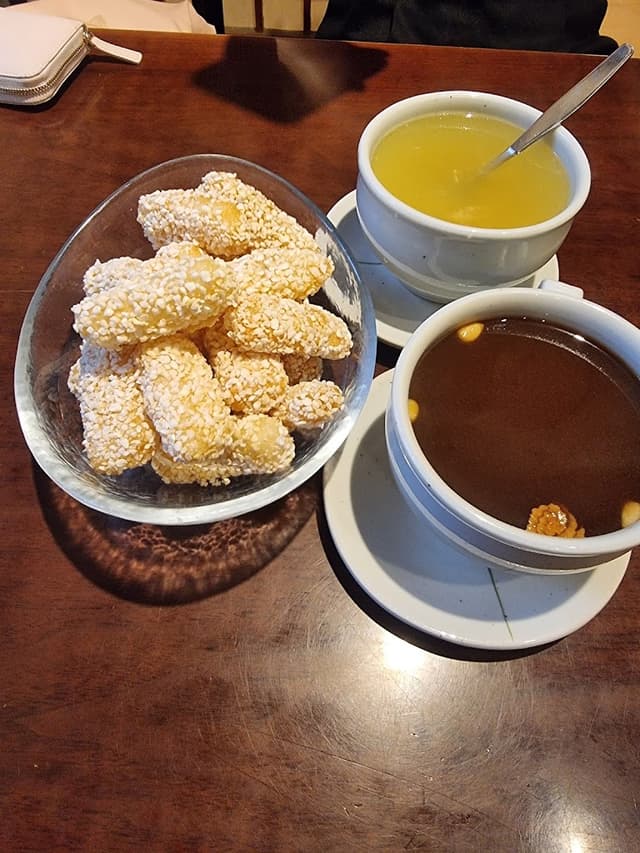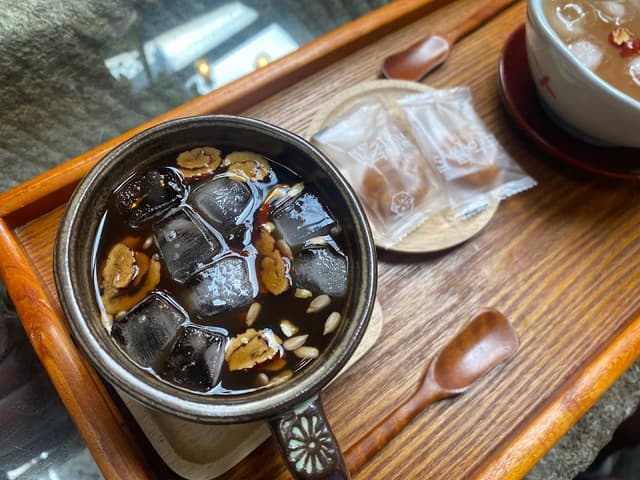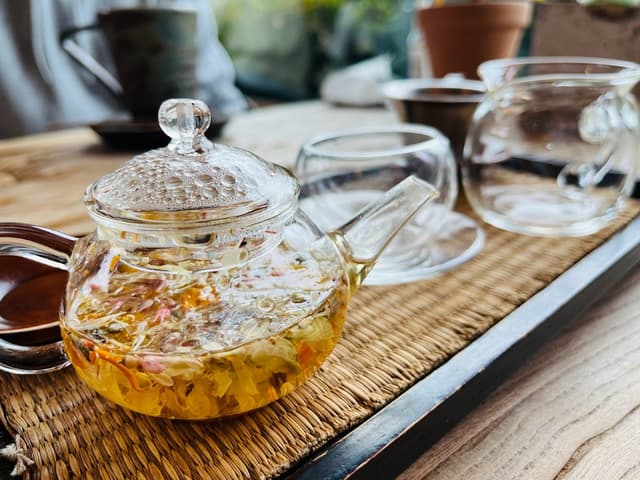
A wonderful way to experience traditional Korean culture is to seek out the atmospheric tearooms dotted around the city. Often tucked away down unassuming alleyways, you'll find the most authentic teahouses located in traditional neighbourhoods such as Insadong and Bukchon Hanok Village. Especially cozy during the winter months, you can warm up and enjoy a cup of fragrant green tea or discover unique flavours such as Omija (five-flavour berry) or Yuja (citrus). Snack on traditional cookies and rice cakes and enjoy the peaceful ambience as you take a break from the world outside.
A Guide to Korean Teas:-
When visiting a Korean teahouse you will find a wide variety of teas on offer. Here are a few of my favourites...
Nok-cha (녹차) Green tea: Light and refreshing, this is a popular tea throughout Asia. It is made from dried tea leaves and is grown in the southern regions of Korea.
Gukhwa-cha (국화차) Chrysanthemum tea: Made from chrysanthemum flowers, this tea is often served in a glass teapot so you can admire the bright yellow flowers. It is popular in the autumn season as this is when the chrysanthemums bloom.
Maesil-cha (매실차) Plum tea: Sweet, tart and fruity, this tea is delicious served either hot or chilled.
Omija-cha (오미자차) Five Flavors tea: This tea is made from the magnolia berry and it is said to have five distinct flavours. It has a distinct berry taste (somewhere between cranberry and raspberry) and is delicious served hot or chilled.
Yuja-cha (유자차) Citron tea: Made from a citrus fruit that resembles a cross between a lemon and a mandarin, this tea is zesty and refreshing. It is delicious served hot or chilled.
Recommended Teahouses:





The home for unique & authentic travel